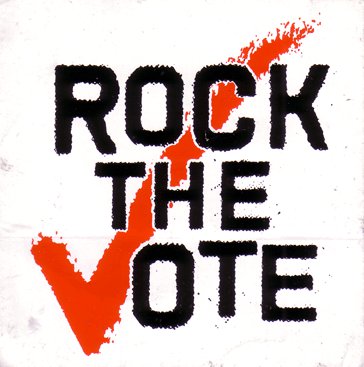 |
| From disassociated.com |
I recently watched the documentary “The People vs. George Lucas” on Netflix. In it the filmmakers explore the rise and fall of the public’s perception of George Lucas especially through the eyes of Star Wars fans and their reaction to the prequels. I could identify with the people shown in the film. For a long time I was a die hard Star Wars fanboy. If you knew me from the years of 1977 until the release of the prequels in 1999 you would have seen my shrine to Yoda, whose teachings were very important to me even though I knew that he was a fictional character spouting phrases that were highly influenced by Eastern philosophy. The original trilogy was memorized and could be quoted on demand. I knew obscure facts that couldn’t even be referenced directly by only watching the movies, it required research into the development of the films and the original drafts of the screen play. I have read the “Journal of the Whills” that is now getting a comic book adaptation – and I did it in 1993 BEFORE THE INTERNET! The expanded universe, novels, toys, video games, toys, the Christmas Special, toys, posters, concept art and toys. I was committed and baptized in the church of Star Wars and, as Rene likes to point out whenever my geek cred is challenged, held court in public on the subject. There wasn’t much wool more dyed in the universe of Star Wars than I and so when the prequels came out it and they ended up being what they were…
The fall was hard and the disappointment was… I can’t even think of a word.
But I was willing to give it another shot. This universe had been a backbone of my childhood fantasy life and I couldn’t give up just because one film was terrible.
Episode 2 came out and, even though Yoda kicked a lot of ass, I was, again, very disappointed. Seriously, is any wonder the Jedi were killed off? They didn’t know their ass from their elbow.
By the time Episode 3 came out I was far from enthusiastic. I really only saw the movie to complete the story. But then Darth Vader screamed, “No” and I was out.
I’m not even going to mention the whole “Han shot first” thing. But he did and my children will not grow up in a world where Greedo shot first. Check out this video where I embarrass myself by mixing up the whole Han/Greedo thing. So embarrassing!
Anyway, I have friends who are still committed. A director friend of mine runs a Star Wars RPG with select members of young Hollywood. Others still collect the merchandise. Most fellow geeks I know own a light saber or two.
I completely gave it up.
I felt betrayed, and so did so many of the people interviewed in the film. The Special Editions are supposed to be the new definitive versions of the original trilogy and, while I actually like many of the adjustments and additions, this is also the same set of movies that have the abysmal Han/Greedo problem and the terrible extra Jabba the Hutt scene. Lets not even mention the fact that two key songs were cut: Yub Nub and the Sy Snoodles song. For me, personally, I could even rationalize all this with my inner raging fanboy if the original version were somehow available somewhere. Somewhere! Here’s hoping that Disney does a little market research and sees that there is a whole lot of niche money in releasing the originals *fingers crossed
These are the ravings of a lost fanboy, but these feelings, and the film, both raise a very valid question: where does private ownership end and communal cultural ownership begin? When do we as the public, who have loved something and made our own contributions to it’s mythos, get to claim a piece of the entertainment we consume? I’m not even talking about a monetary piece – that’s a whole different can of worms – but a little corner of the universe that fans can claim as their own.
It’s not like fans are kept from doing things. Fan films are practically their own genre, some are even famous on their own right (see Troops and Batman: Dead End). Novels are the printed fan-fiction of recognized authors and if you’re a Whovian you have a whole set of radio dramas to help build the list of Doctor Who adventures with a variety of different Doctors to choose from. Will and passion become the fuel that generates whole new chapters to the stories that we love. Whether you’re a Lord of the Rings fan, Potter-maniac, Whovian, Trekkie, Star Wars geek or Bronie, the Internet now connects you to like-minded individuals, many of whom may have a podcast or enough amateur film equipment to create new content.
And that’s when I start to question what that might mean for the future and for the content I like to create. There are movies and narrative film ideas that the team and I have been working on, but I’m only really getting to a point where I’ve stated to develop the ideas for new characters, worlds and stories that I hope to publish and capture on some sort of video media. While it would be hubris to think that anything that I write would become anything as big or as beloved as any of the universes I mentioned above, I have hopes that it might. And you kind of need to think of the “the morning after the night before” to be prepared for the “just in case” scenario.
With crowd sourcing and Internet community becoming not only common but typical and growing and more and more a part of our lives, it’s interesting to think about how that can integrate into content creation. I want fan support (I mean, duh, that’s kind of a given) but I also want participation. Sometimes fan ideas take your ideas in places you can’t imagine on your own and they challenge the preconceptions that you develop for yourself. It’s exciting and it’s scary and its the future.
What do you think? How did you feel about the Special Editions and the prequels? What are you a geek for? Tell me in the comments. Let’s keep this conversation going!
See you next time.
By the way, want to own the movie on DVD? You can find it by clicking on the picture below.
Like this:
Like Loading...





